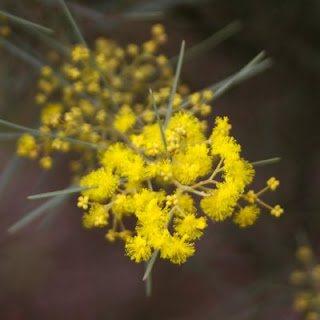Aneroid Barometers are the most common way to measure atmospheric pressure. But the first barometers use columns of displaced mercury to measure pressure, which is why pressure was originally measured as inches of Mercury (InHg) or millimetres of Mercury (mmHg). At the beginning of the 1900s the
millibar (and bar) was introduced as the international measure of atmospheric pressure. Today most instruments give measurements in
hectopascals.
The earth atmosphere gets thinner with height, because of the weight of air above it is less. Infact an aneroid barometer can be used to measure altitude. Air pressure gets roughly 1 hectopascal (Hpa) lower for each 10 metres of ascent. To test this I took my reference barometer (a decorative one rather than a highly precise instrument) for a drive up to
Olinda in the Dandenong ranges. I got a rough reading from
Google Earth that I started at 74m and reached 577m elevation at Olinda (this is most probably several 10s of metres out by the way but I was only interested in relative height difference and have assumed that both estimates are similarly out). The initial reading of the barometer was 1010 HPa and was 960 Hpa after I let it rest for

a while on an old tree log at Olinda. An inquisitive Kookaburra took an interest (presumably seeing if it was edible). So there was approx. 500m difference in elevation and the air pressure dropped 50 Hpa. My old barometer seems ok, and a worthy calibration companion for my new weather station.
Most published weather charts show the air pressure at sea level (MSLP, Mean Sea level Pressure) and so it has become a convention to set barometers used in weather prediction to a "relative" pressure at sea level. Normally you can obtain this by finding details of a nearby government weather observatory (
BOM Bureau of Meteorology in Australia) and adopting that pressure as your reference. Modern aneroid barometer often have a small adjustments on the back to do this. Digital barometers and weather station usually have a set/calibrate procedure, to change the displayed reading.









![Wollemi Pine [Wollemia nobilius] website](http://photos1.blogger.com/x/blogger2/1930/3564/240/362820/gse_multipart1061.jpg)

